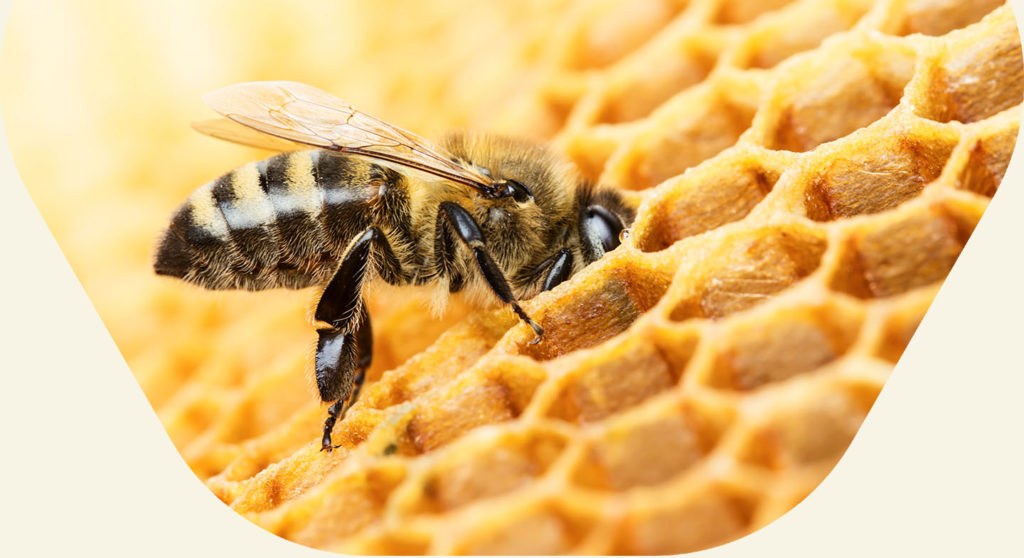The domestication of the bee
The domestication of the bee is a fascinating process that spans several thousand years. But how did they come to be with us?
The origin of the bee:
Honey bees, known in particular as ‘Apis Mellifera’, have coexisted with humans since prehistoric times. Before domestication, humans harvested honey in the wild, directly from the forests. Archaeological evidence points to the existence of bees as far back as 8,000 years ago, arriving on earth around 100 million years ago. In particular, cave paintings have been found in Spain showing hunters harvesting honey in the wild. This activity, which is still practised today in some countries, is still very risky because it involves pulling honeycomb directly from the nest, often to the detriment of the colony and with the risk of serious stings.
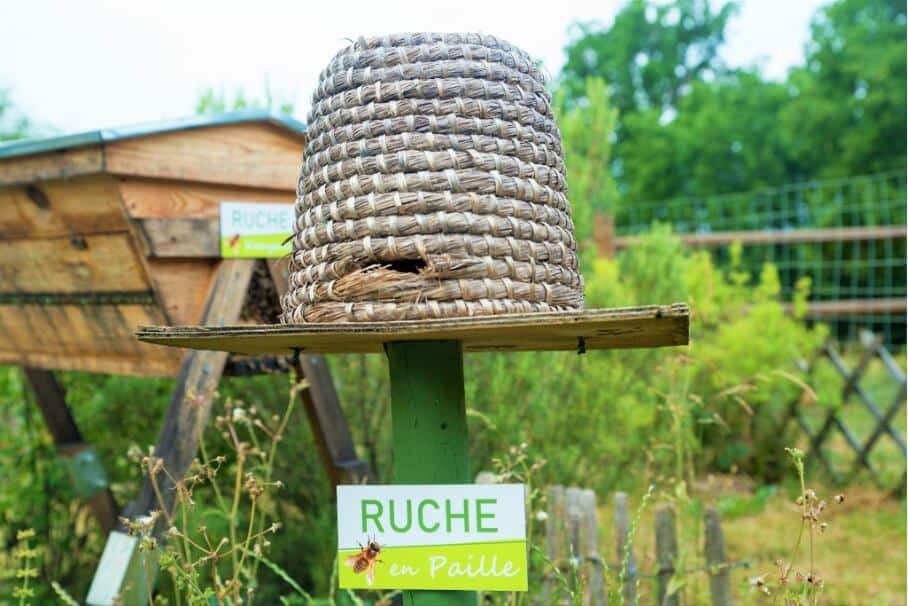
Creation of the straw hive 4,000 years BC
The first domestications:
Domestication began around 4,000 to 3,000 BC in the Near East and in ancient Egypt. Humans began to keep bees in very rudimentary hives, often made of clay, wood, hollowed-out tree trunks or straw with hand-woven baskets. These hives were cylindrical in shape. They enabled man to contain colonies of bees and harvest their honey more easily without systematically destroying their constructions. The Egyptians, in particular, used terracotta hives. Honey was associated with medical and religious uses, which enhanced the value of this resource.
Development of beekeeping techniques:
The Greeks and Romans perfected beekeeping practices with the writing of the first books on bees. It was a time of many observations and interpretations of nature. The hives were made of rye straw or woven reeds called ‘Skeps’, a bell-shaped model that was widespread in Europe.
Monastic beekeeping:
During the Middle Ages and the Renaissance, beekeeping spread throughout Europe, often practised in monasteries, as is still the case today. For the record, I myself have an apiary for many years in a convent with the nuns. Honey was a precious product used as a sweetener, preservative and medicine. Harvesting methods are still traditional, often to the detriment of the bees.
The turning point in beekeeping:
The 19th century was a turning point for beekeeping, with the advent of moveable-frame hives. Beekeeping underwent a major revolution thanks to the American pastor Lorenzo Langstroth. In 1851, he invented the first movable-frame hive, enabling the combs to be manipulated without destroying the colony. This innovation revolutionised modern beekeeping, making bee management more efficient and sustainable. Its invention came from the discovery of the space between the wax combs: a small space that bees leave between the combs, allowing them to be unhooked from each other. The Langstroth hive is still used today by professional beekeepers, but is still mainly found in North America.
This innovation has led to better management of the hive, which is less stressful for the bees, but also to an increase in honey production and the development of industrial and commercial beekeeping.
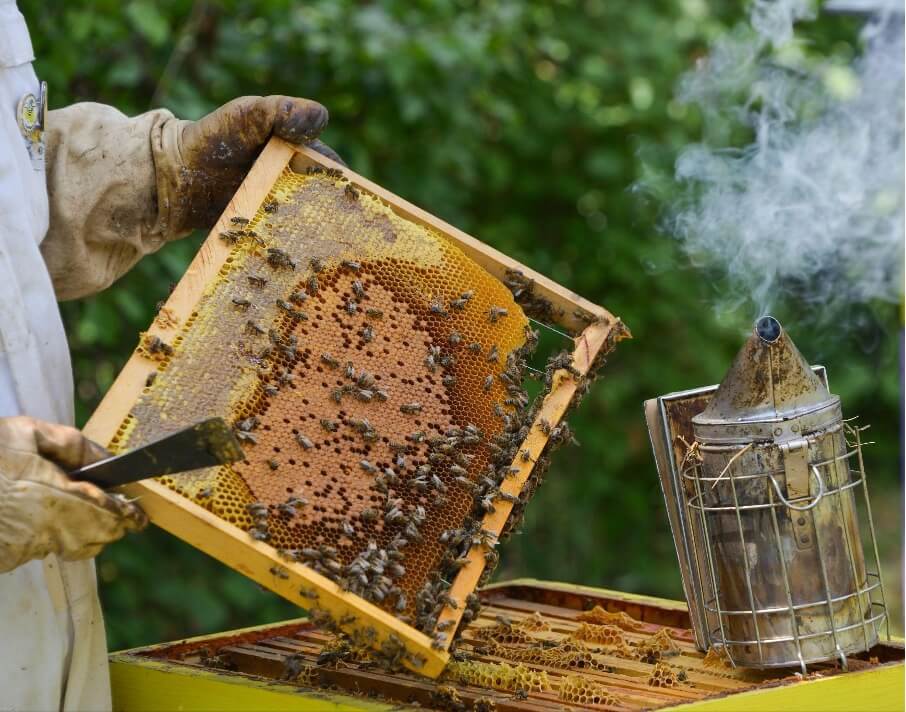
The frame, a revolution in observation by beekeepers
On the research front, biologist Karl von Frisch (1886-1982) carried out revolutionary research into bee communication. He discovered that bees communicate the location of a food source by means of a coded wriggling dance. He demonstrated that bees perceive colours, including ultraviolet, and distinguish odours. His first publications on bees were written in 1923, earning him the Nobel Prize in 1973.
Contemporary beekeeping:
Today, beekeeping is a traditional activity. Beekeepers use modern hives, protective equipment and sometimes technologies such as digital hive monitoring. Hives have also evolved with the arrival of plastic. A component that beekeepers appreciate more and more, particularly for feeders and floors. Many inventors have wanted to build their own hive by adjusting the dimensions, such as the arrival of the Dadant hive (1863, invented by the French-American Charles Dadant), widely used in France; the Warré hive in 1948; then the Kenyan hive in Africa (1960); right up to the appearance of the Flow Hive in 2015 in Australia, enabling honey to be harvested without opening the hive.
The domestication of bees has become crucial to world agriculture through their role as pollinators. Bee management is now an ecological concern, particularly in the face of threats such as pesticides, parasites (Varroa) and diseases, predators and the lack of flowers that are causing the gradual disappearance of the species.
The domestication of bees has gone from simply collecting wild honey to the scientific and technological management of colonies, with a major impact on the economy, agriculture and the ecosystem.
Smoke and bees
The use of smoke to calm bees dates back thousands of years. In ancient times, over 4,000 years ago, man realised that smoke would enable him to manipulate bees. Before the advent of the smoker, smoking torches were used to calm the bees before picking the combs. Dry grass was also burnt.
Representations show beekeepers using smoke in ancient times, before Aristotle mentioned its use in ancient Greece.
Smoke is said to make bees more docile when opening the hive. This method was used until the Middle Ages. The modern smoker did not arrive until 1873. The American beekeeper Moses Quinby invented the bellows smoker, which is still in use today. It produced cold, controlled smoke, which greatly improved beehive management.
The principle behind the smoke is to deactivate the warning pheromones and induce calm flight behaviour in the bees.
Today, technology has enabled man to automate his tool by creating the electric smoker!
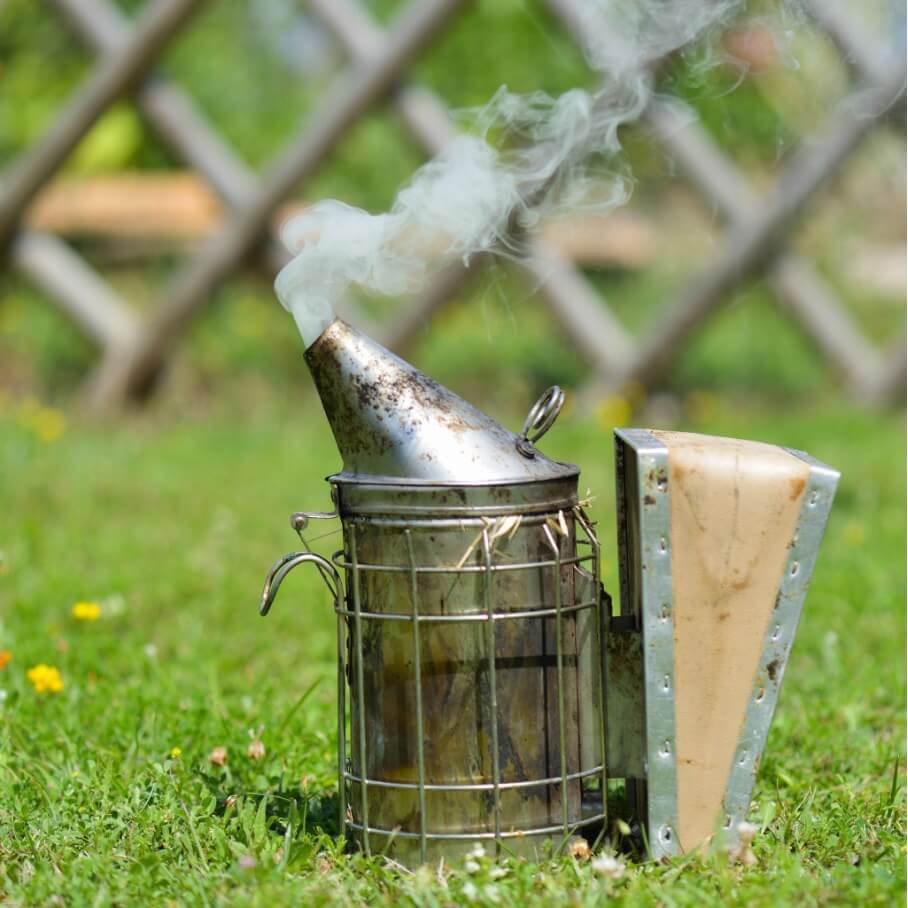
Modern smoker in operation
The creation of breeds
The creation of bee breeds, or more precisely strains (or lineages), is an old story in beekeeping.
Before human intervention, bees developed freely and adapted naturally to their local environment. Breeds were created as a result of the geographical isolation of certain strains.
The Black Bee (Apis mellifera mellifera), as it is commonly known, originated in Western and Northern Europe. Other subspecies have isolated themselves, such as the Italian or Caucasian.
It was not until the 18th century that beekeepers began to select colonies. This selection was based on a number of factors, including docility, honey production and resistance to the local climate.
Genetic improvement and emergence came in the 20th century. Methods of artificial insemination of queens and cross-breeding between breeds were developed to combine their advantages. It was in 1916 that the Buckfast bee (widely used today) arrived on the scene, created by Brother Adam in England. The aim of selection was to produce strains that were calm on frames, but also to limit swarming and increase resistance to diseases (such as Varroa).
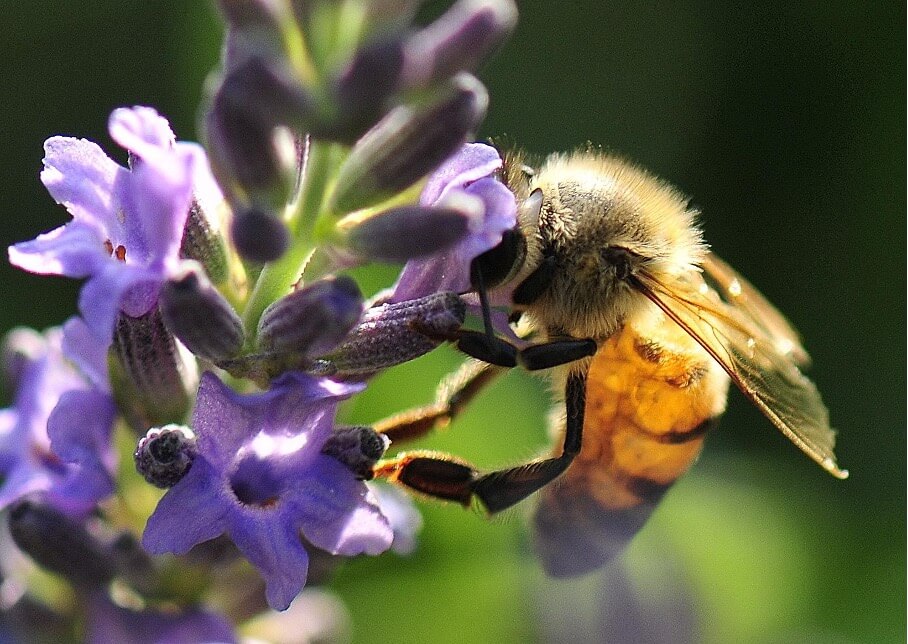
Apis Mellifera bee in a flower
But all these genetic tests were not always conclusive, as shown by the creation of the Africanised bee in 1956, which had become aggressive and invasive.
This led to the return of local breeds and gentle selection in the 21st century. Programmes to safeguard local subspecies have been set up, such as the preservation of the black bee by conservatories in France, Switzerland, Spain and the UK.
History has much more to tell us…
As usual, share your photos with us: we’ll post them on our website from the social networks with the hashtag: #apifonda #apiinvert!
See you next month on your API blog with your faithful partner, Les Ruchers De Mathieu!
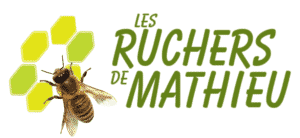
LES RUCHERS DE MATHIEU
Miellerie & Magasin d’Apiculture
Photos ©lesruchersdemathieu


